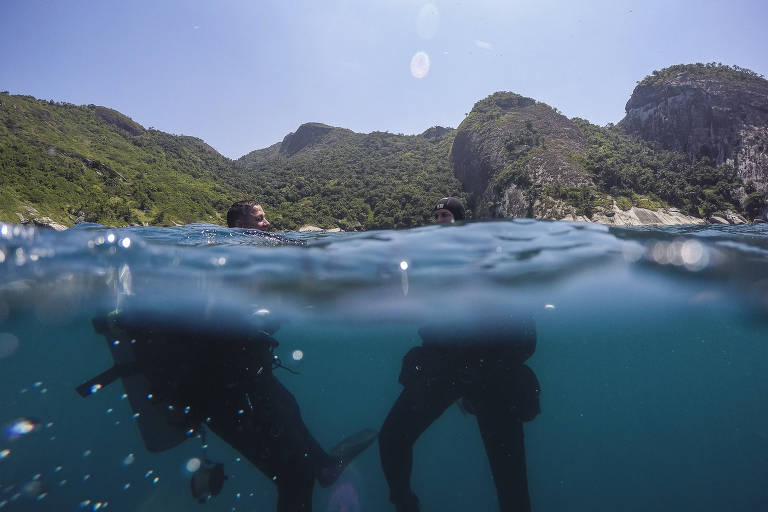See four places in Brazil where you can spot sea animals and swim with them — from turtles to rays up to eight meters long.
Alcatrazes
São Paulo
The archipelago is home to over 1,300 species of animals, 100 of them endangered. It is also the largest frigate nest in the South Atlantic, serving as a resting, feeding and breeding area for 10,000 seabirds. Located 45 km from the port of San Sebastian, it was opened to nautical tourism in December, after almost three decades of prohibition. Snorkeling or scuba diving (with a diving license) is possible. Only companies registered by the Chico Mendes Institute for Biodiversity Conservation can offer the tour. The list is at icmbio.gov.br/refugiodealcatrazes.
Fernando de Noronha
Pernambuco
The set of 21 islands is considered one of the most important ecological sanctuaries in the world, where you can see animals such as turtles, dolphins, and sharks. In 2018, the place received 100,400 tourists, which exceeded the proposed limit of up to 89,000 visitors per year.
Abrolhos
Bahia
The 91,000-hectare area is the country's first marine conservation unit, created in 1983. The five rocky islands of volcanic origin make up one of the largest biodiversities in the South Atlantic. Tourists can dive there and see multicolored fish, turtles, algae, and corals. Also, you can walk around Siriba Island, accompanied by ICMBio guides, and get close to the nests of white boobies and grazinas. 70 km from the coast, the archipelago is also one of the best places to spot humpback whales from July to November. The list of accredited operators is on the park's website: icmbio.govbr/parnaabrolhos
Laje de Santos
São Paulo
At 45 km from the coast, is the first and only marine park in the state, created in 1993. Composed of rocky shores and corals, the area has an environment conducive to marine life. You can swim with shoals, turtles, and blanket rays up to eight meters long. On sunny days, visibility for diving reaches 35 meters.
Translated by Kiratiana Freelon



